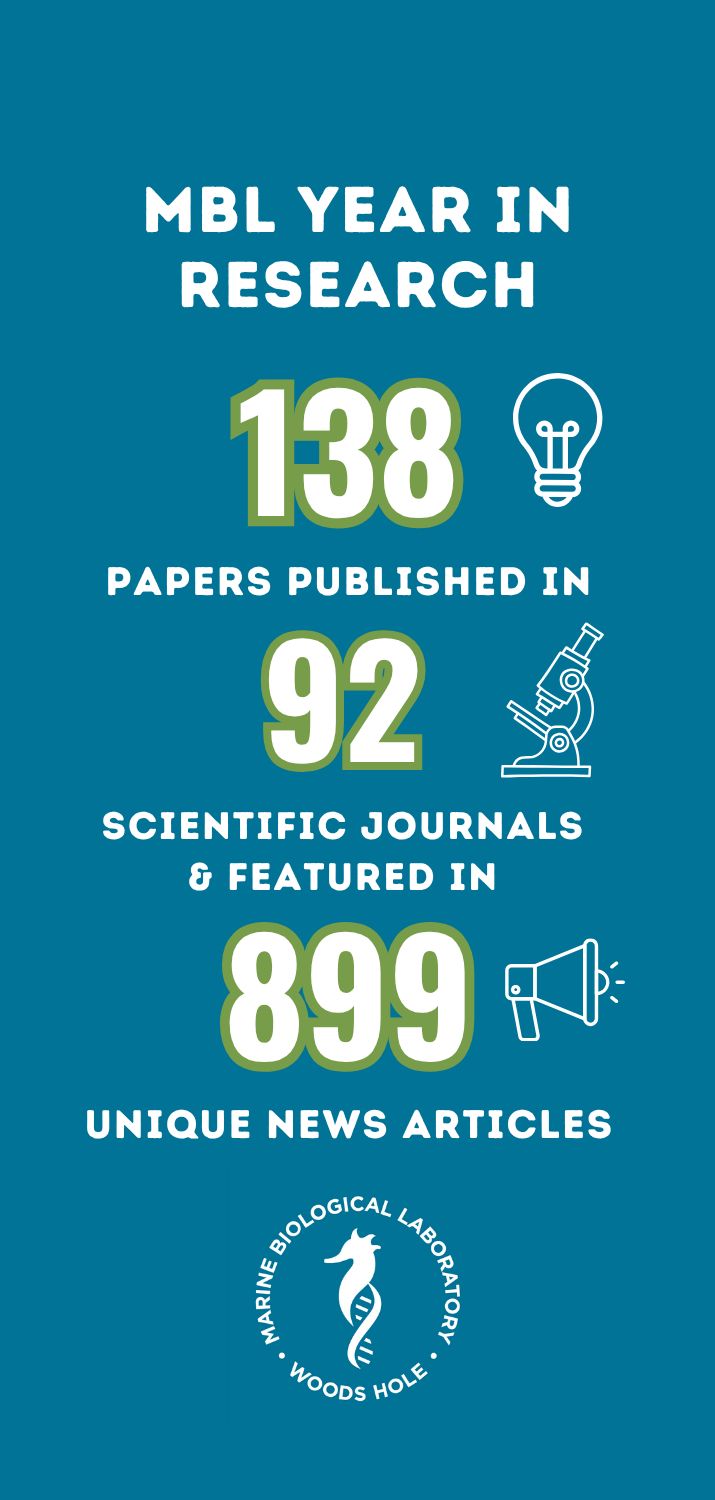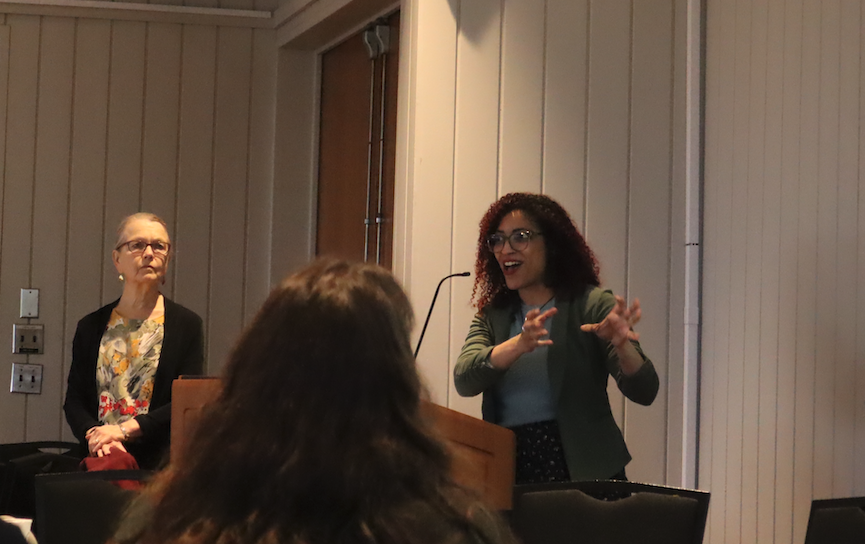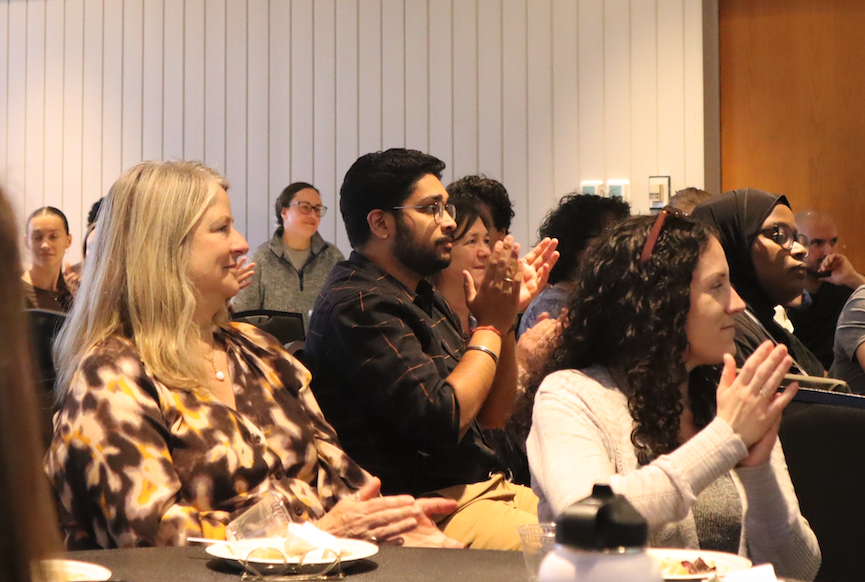MBL Celebrates Fourth Annual Research Day
A highlight of the MBL spring calendar is Research Day, when resident scientists and staff gather to learn from each other and celebrate the hard work and accomplishments of the prior year.
On May 8, MBL Director of Research Anne Sylvester announced the theme of the fourth annual Research Day: “Looking to the Future.” Over 100 MBL community members gathered to recognize and thank employees and to share quick glimpses into the groundbreaking research happening in the MBL’s three resident research centers: the Eugene Bell Center for Regenerative Biology and Tissue Engineering, the Joseph Bay Paul Center for Comparative Molecular Biology and Evolution, and the Ecosystems Center.
“The biological discovery that happens here day and night, all the time, leads to impact in the areas of human health and disease, planetary health, and imaging innovation,” said Sylvester.
Sylvester gave a birds-eye perspective on the past year of research. MBL resident and Whitman Center researchers published 138 papers in 92 scientific journals, collaborating with co-authors from 565 institutions and 44 countries. MBL research was also featured in 899 unique news articles in 49 countries, with several news and social posts going viral.
In addition to the MBL’s scientists, Sylvester recognized those who make their world-class research possible: the staff who collect and maintain research organisms, build specialized microscopes, shepherd through grant proposals, and administer research and education programs.
“We don’t just do science here, we develop the tools and organisms that allow you to do science,” said Sylvester.
Six scientists gave “flash talks” that reflected the range of MBL research across scales of size —from molecular to cellular to organismal to ecosystems —and time —from nanoseconds to evolutionary time.
MBL Research Scientist Rylie Walsh spoke about her love for the MBL and her work in the Imaging Innovation Lab building new light microscopes that allow scientists to ask questions that are impossible to pursue with commercial microscopes.
"When I first came to the MBL in the summer of 2011 as an undergraduate, I thought I wanted to go to medical school, so I brought my MCAT books with me to study whenever I had downtime. Instead, I spent all my downtime going to lectures. At the end of the summer, I sold my MCAT books, and now here I am,” said Walsh.

Anne Giblin, senior scientist and director of the Ecosystems Center, talked about the center’s 50-year legacy of groundbreaking discovery studying the planet’s carbon and nitrogen cycles, microbial processes, and climate feedback loops.The long-term data sets of ecosystem processes that the center’s scientists have built and stewarded are an invaluable asset for understanding global environmental change.
Cristina Roman-Vendrell, a postdoctoral scientist in Jen Morgan’s lab, shared how she first came to the MBL as a student and fell in love with the lamprey as a model organism. Roman-Vendrell will soon be moving to Georgia Southern University as an assistant professor, where her lab will focus on membrane trafficking in the nervous system and neurodegenerative disease.
“The MBL will always be my scientific home,” said Roman-Vendrell.

